Gnaeus Domitius Corbulo
Gnaeus Domitius Corbulo (7 CE? - 67): Roman general, active in the Netherlands and Syria. The emperor Nero forced him to commit suicide.
Asia
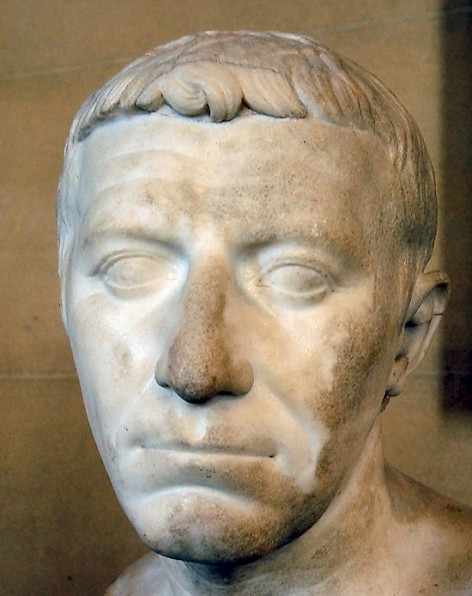
When Corbulo returned to Italy, he received triumphal honors, but no new office. Perhaps the emperor Claudius suspected the general who had invaded Germania at a moment when he ought to remain quiet. Another, kinder, explanation is that Corbulo wanted to stay at home because his daughter Domitia Longina had been born. However this may be, in 52/53, Corbulo was governor of Asia, a wealthy province in western Turkey. Although this was one of the most honorable positions a senator could occupy, to a man who had commanded four legions, it must have looked like a demotion.
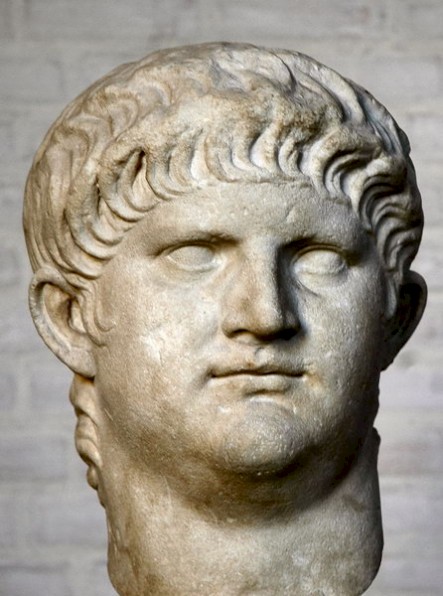
Claudius died in 54. His stepson Nero succeeded him and immediately sent Corbulo to the east, where a major crisis was looming. In 52, the Parthian king Vologases invaded Armenia, occupied its capitals Artaxata and Tigranocerta, and made his younger brother Tiridates king of Armenia.note This was a breach of a treaty that the Parthian king Phraates IV had concluded with the Roman emperor Augustus in 20 BCE: the Romans were allowed to appoint the Armenian king. We do not know Corbulo's official position; but since Cappadocia, the region where he was staying, was technically part of Syria (usually ruled by a procurator) and we find him as an independent commander, he must have been something like "general in Cappadocia", not "governor of Cappadocia".
Corbulo was to reorganize the army in Galatia and Cappadocia.note Nero also gave orders to his vassal kings to gather troops. Herod Agrippa II of Judaea and Antiochus IV of Commagene prepared bridges across the Euphrates. Moreover, the eastern frontier was reorganized and two new vassal kingdoms, Lesser Armenia (on the Black Sea) and Sophene (on the Euphrates), were assigned to Aristobulus, a relative of Herod Agrippa, and the Syrian prince Sohaemus.note Polemon II of Pontus appears to have been another Roman ally.note
Roman Successes
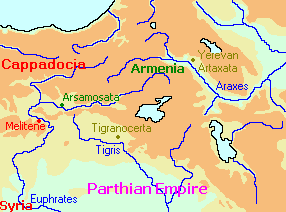
Meanwhile, two Roman forces were prepared. The governor of Syria, Ummidius Quadratus, commanded two legions, X Fretensis and XII Fulminata, while the general in Cappadocia, Gnaeus Domitius Corbulo, reorganized III Gallica and VI Ferrata.note The Roman historian Tacitus tells that Corbulo had to restore discipline among his soldiers first, but this is a topical anecdote. It is possible that the Romans had little appetite for this war; both commanders sent messages to Vologases and were looking for a diplomatic settlement. The Parthian king, who had who still had to deal with his rebel son Vardanes II in Media and Hyrcania, complied and gave hostages to Ummidius (55).note.
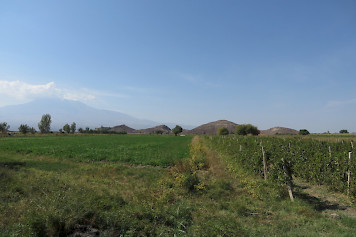
In the meantime, a new legion, IIII Scythica, arrived from the Danube, and the situation in Armenia got worse when Tiridates threatened pro-Roman Armenians. So the war, which both sides had tried to avert, broke out in 58.note After some initial fighting between the Armenians and the Roman forces, Corbulo proceeded to the Armenian capital Artaxata, forcing Tiridates to defend it, and risk a pitched battle. Indeed, the city fell,note followed by the other capital, Tigranocerta, in the next year.note Tiridates fled.
The Romans, now in control of Armenia, blocked the advance of a Parthian army given to Tiridates by Vologases,note and installed a new, pro-Roman king, Tigranes VI, supported by a Roman garrison.note Several Armenian districts in the west were added to the kingdoms of Rome's vassals: to Aristobulus of Lesser Armenia, to Polemo of Pontus, and to Antiochus of Commagene. It is interesting that, the new king of Armenia, Tigranes, was another Herodian prince: Herod Agrippa had sent troops, Aristobulus had been made king of Lesser Armenia, and Tigranes was the third descendant of Herod the Great.
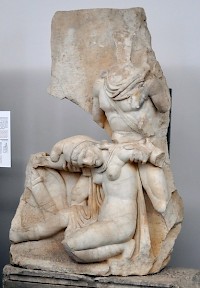
When Corbulo returned from Armenia, he learned that governor Ummidius of Syria had died,note and that he was to succeed him. This was a very prestigious appointment, a worthy reward for a general who had in 58 and 59 been spectacularly successful. Syria was not only a wealthy province, but also a large one, with the two annexes Cappadocia and Judaea ruled by procurators. Corbulo arrived in Antioch, the capital of his new province, in 60.
The Parthians Return
The war was not over yet. The Romans continued to reinforce their army in Cappadocia with extra recruits and a new legion, V Macedonica, which arrived in 61. The knowledge that he would have Roman support gave the pro-Roman king of Armenia, Tigranes, the impression that he could do anything, and he raided the northern provinces of the Parthian Empire.note This forced Vologases, who wanted to keep out of the Armenian conflict because of the eastern revolt, to intervene. The king of Parthia convened a meeting of his nobility, declared that his brother Tigranes was the rightful king of Armenia, and marched against Rome after concluding an armistice in the east.note His HQs were at Nisibis.note
The Romans had expected this and had a plan. If the Parthians would invade Armenia, one army was to move from Cappadocia along a northerly road into Armenia (similar to the attack in 58). This would lure the Parthian army to the north, opening the road for a second Roman army, which was to move from Syria along a southerly road towards the Upper Tigris. If everything went according to plan, the Parthian army would be caught between two Roman forces and could be destroyed.
Unfortunately, the Romans were not ready when a Parthian army, commanded by a general named Monaesus, laid siege to Tigranocerta (spring 62): the commander of the northern army, Lucius Caesennius Paetus, had not arrived yet. He had been consul in 61 and may have had duties to perform. However that may be, when Vologases and Monaesus were approaching, Corbulo reinforced the garrison in Armenia,note and the Parthians were unable to take Tigranocerta.note Corbulo now sent an envoy to Vologases, demanding that the Parthians retreated,note and an armistice was concluded: a Parthian embassy would go to Rome to negotiate a peace treaty.
The Parthians Victorious
Meanwhile, Caesennius Paetus, the commander of the northern army, arrived.note He would command V Macedonica, IIII Scythica, and XII Fulminata, and when he learned that the peace negotiations had failed, he used the two last-mentioned units to invade Armenia, crossing the Euphrates,note probably at Melitene, and capturing several forts that were loyal to the Parthian king of Armenia, Tiridates. Meanwhile, Corbulo bridged the Euphrates as well and crossed into Mesopotamia.note Then, he received bad news: Vologases had advanced against Paetus, who had marched straight into a trap and was now besieged at Rhandeia in the neighborhood of Arsamosata.note
Corbulo moved along the Euphrates up to Melitene,note but he was too late: the Fourth and Twelfth had surrendered to Vologases at Rhandeia and were forced to return home.note In the early third century CE, Graeco-Roman historian Cassius Dio wrote that Vologases had organized a triumphal procession, in which he rode on an elephant.note It is likely that Vologases, who might have destroyed Paetus' legions but was satisfied with their return, was already looking towards a peace treaty.
So, in the winter of 62/63, there were new peace negotiations and Vologases, who reminded the Senate of his clemency, proposed that his brother Tiridates would visit Rome to do obeisance to Nero.note However, the Romans refused to come to terms: all out war with Vologases was preferable to an ignominious peace.note
The End of the War
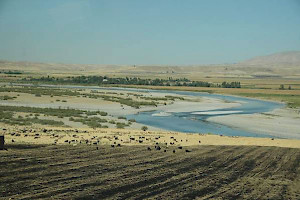
So, in the spring of 63 CE, Corbulo invaded Armenia again. He commanded four legions (III Gallica, V Macedonica, VI Ferrata, and the newly-arrived XV Apollinaris).note The disgraced legions IIII Scythica and XII Fulminata were left behind in Syria, where Gaius Cestius was Corbulo's deputy.note X Fretensis was to guard Cappadocia.
Corbulo commanded a considerable force and led them to Tigranocerta.note Vologases and Tiridates knew that this time, the war could no longer be won. On the other hand, Corbulo knew that it would be difficult to prolong the war, because fighting in the mountainous country was very hard. When Vologases sent envoys, Corbulo received them friendly.note
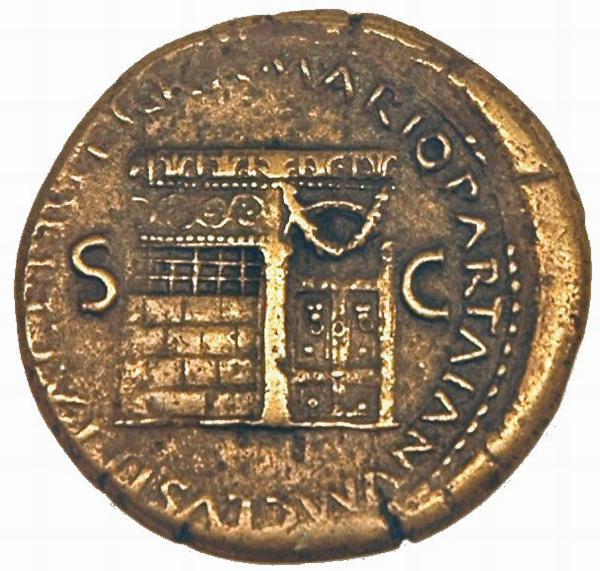
An armistice was agreed upon. The Roman negotiator was an Egyptian Jew named Tiberius Julius Alexander.note The Parthians conceded that in the future, the king of Armenia had to be appointed by the Roman emperor, and the Romans declared that they did not wish to prolong the war. The two parties agreed that Tiridates laid down his crown and was to go to Rome, where he would receive the object again from Nero.note
In 66, Tiridates did indeed visit Rome, which was still a ruin because of the great Fire. In the Roman propaganda, the coronation of Tiridates was seen as a victory without parallel. The gates of Janus were closed, a symbol of peace. The hard facts, however, are that the war had had no winner. But Nero, whose popularity was in decline, needed a hero, and as a consequence, Corbulo received the highest of all possible honors.
Return to Rome
In 67, however, Nero ordered Corbulo to commit suicide. We do not know the exact reason, because our main source, Tacitus, does not describe this event. Corbulo did what he was ordered to do, and later generations considered him as another innocent victim of Nero's regime. The result was that later authors, such as Tacitus, did not cast doubt on the Neronian praise of Corbulo or his own boastful autobiography. It was only in the twentieth century that a more balanced view became possible: he was a capable general, but certainly not a genius.
Corbulo was married to Cassia Longina and had a daughter Domitia Longina, who in 70 became the wife of Titus Flavius Domitianus, better known as the emperor Domitian (81-96). She was involved in the assassination of her husband, and died after 126.